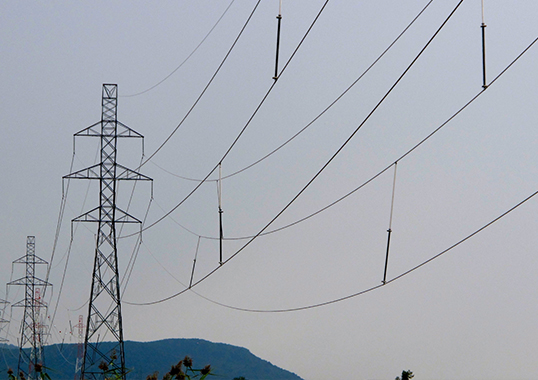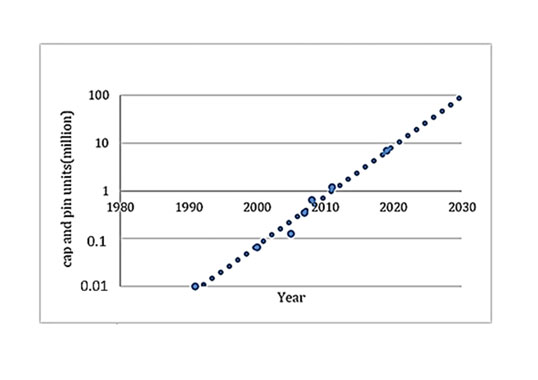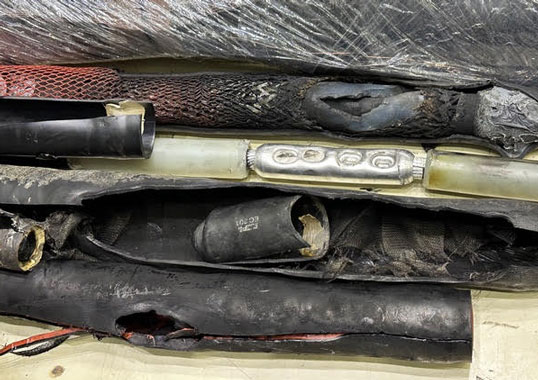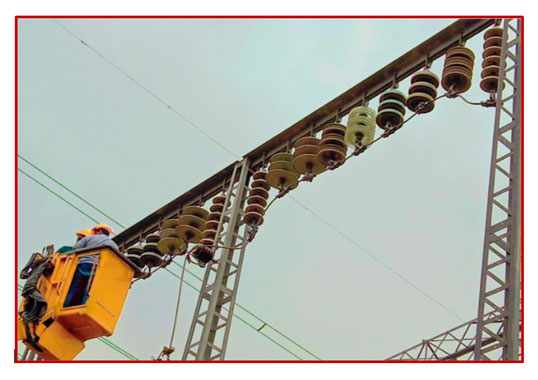Case Study for Application of 400 kV Interphase Spacers by Steve Bell
Anew overhead line in Scotland needed for increased renewable power transmission was designed with 400 kV capability but with circuits operated at 275 kV or 400 kV as needed. The new line follows the 220 km route of an existing 132 kV transmission line with single conductors from Beauly Substation to Denny North Substation. Due to concerns about galloping, interphase spacers were selected as mitigation to ensure reliability of this key link into the Scottish and Southern Energy grids. Since the route over hilly terrain experiences high winds combined with wet snow accumulations on conductors, composite interphase spacers had already been installed on the existing 132 kV line. Galloping is large amplitude, low frequency, wind-induced oscillation of overhead lines. In most cases, ice accretion on a conductor modifies the cross-sectional shape such that it becomes aerodynamically unstable. The types of ice and snow that can accrete on conductors are rime ice, glaze ice, frost, dry snow and wet snow. Amplitudes are principally vertical and can range from + 0.1 to 1.0 times the sag of a span, while frequencies usually range from 0.15 to 1.0 Hz. This presentation reviews the background, engineering and installation of interphase spacers for a transmission line exposed to icing combined with driving winds between 8 to 72 km/h at an angle to the line of 10 to 90 degrees and that can be unsteady in velocity and direction.









